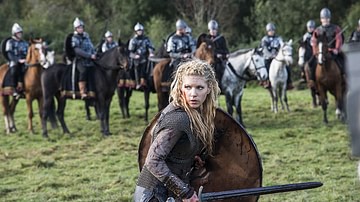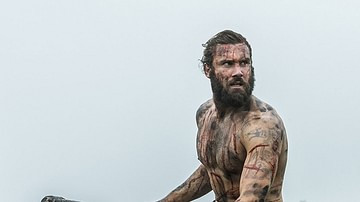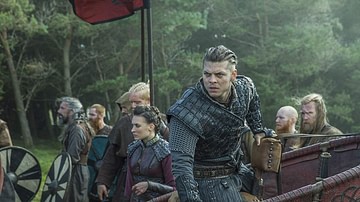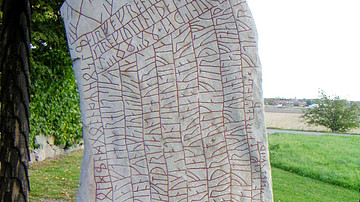This collection on the Vikings, who dominated northern Europe from c. 790 CE to c. 1100 CE, examines not only their fearsome reputation for war and invasion but also their celebrated ships, navigational skills, and runes writing system. In addition, we look at some of the famous figures, both men and women, from Viking history (including some featured in the modern TV series Vikings).
Although the Vikings were great warriors and their name in the present day is almost synonymous with warfare, slaughter, and destruction – an association encouraged by popular media representations – the Scandinavian culture was actually highly developed and the Viking raids on other nations were only one aspect of the civilization.
Tips for Teachers & Educators
The Vikings were fascinating people, beyond their fighting skills, no wonder such a popular series was based on them! You should have enough material in this collection to help your class preparation.
- If you do not wish to show an extract of the TV Series Vikings, another nice way to start the class would be to have your students do an internet quiz for them to find out which Vikings character they are. A simple internet search will give you plenty. This will get the conversation going for sure, and their engagement rising! You can always assign the reading of our Vikings article for preparation (or instead) if you are not keen on either the video or the quiz.
- Then, it is time to delve deeper into each character's history. How about dividing the class into three groups and have them analyze one article each about Lagertha, Rollo of Normandy or Ivar the Boneless. What is interesting here is to see what differs between the TV series and the historical information we have. Even if you or some of your students have not seen Vikings, everything you need is in the article. You could keep it as a conversation or prepare a table for each group to complete with: character description in history (strengths, drawbacks), character description in TV series (strengths, drawbacks), differences (why is it different)?
- After that, you have plenty of choices to carry on your class. You can either:
-
focus on daily life aspects and get to know the Vikings even better. We have some fantastic articles in this collection about, women, runes (this article comes with a great video), food and cuisine, ships and warfare (this article is also an audio article should you prefer this format). If you have a class which would benefit for some hands-on experience, we would recommend the STEM activities that have been put together in very handy and free PDFs (listing all materials and complete instructions) by the Royal Society of Chemistry. It is not all about chemistry however, you can, for example, compare long vs. short cutting edge weapons, make Viking bread, preserve cucumber in salt or see what fabric keeps you the warmest or the coolest!
- focus on Norse Mythology: we have prepared this additional collection for you, full of varied materials: you have plenty of very good videos and audio articles, should you want to limit the reading time in your class.
-
- Finally, if you are looking for some science-based cross-curricular inspiration on Vikings, the Royal Society of Chemistry has also compiled a great selection, per age group. To be checked out!
Enjoy your teaching!









